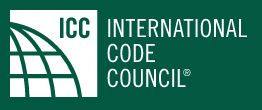Over the past two years, the International Code Council’s (ICC) family of I-Codes have been undergoing development for the 2021 editions of the International Building Code (IBC), International Residential Code (IRC), and International Energy Conservation Code (IECC), among others. Documentation and results of 2018 Group A and 2019 Group B code development processes are found here.
With the recent conclusion of the final stage of the ICC code development process for the 2021 I-Codes (pending confirmation of on-line voting results for Group B), it is now time to begin assessing what happened in the realm of energy efficiency and building science advancements. A tiny sample of advancements are noted below with more details to come in future articles.
- Significant improvements in the thermal performance (R-values and U-factors) of building envelopes for commercial and residential buildings governed by the IECC.
- Overhaul and update of water vapor control provisions for the IBC and IRC, including better organization, recognition of smart vapor retarders, and expanded guidance for appropriate use of continuous insulation to control water vapor. Explore the links below to read more about vapor barrier science and installation guidance.
- Expanded options for wood frame wall R-value compliance including cavity insulation only, cavity plus continuous insulation (hybrid assembly), and continuous insulation only (i.e., “perfect wall”) options. Again, explore the links below to read more about “perfect” and “hybrid” walls.
- Improved and clarified requirements for water-resistive barrier and drainage space to mitigate moisture problems experienced by wood-frame walls clad with conventional Portland cement stucco. For example, read this article on how exterior walls need to breathe.
- A new climate zone map for the U.S.
- Improved Energy Rating Index (ERI) scores for homes – also known as HERS scores.
- Improved air leakage criteria and testing requirements for commercial and residential buildings. For more information on air-barriers and air-leakage control, refer to the Air Barrier Topical Library on continuousinsulation.org.
- Additional energy efficiency packages and “points” options for commercial and residential construction.
- Revised “above-grade wall” definition to include floor edges to ensure continuity of building envelope thermal performance at assembly intersections (i.e., mitigate thermal bridges).
- Clarification of “energy code math” for proper addition of insulation components for R-value compliance. For example, addressing why an R-25 wall is not equal to an R-20+5ci.
- Provision for use of renewable energy use and design and construction of net zero energy buildings (also with provisions to prevent misuse of renewable energy as a means to trade-off energy efficiency or conservation).
These expected changes for the 2021 editions of the IBC, IRC, and IECC codes are only the tip of the iceberg. We look forward to highlighting various proposals and their details in future EEBS News articles.
For additional information, please review the following articles, as well as the previous videos in this series:
Perfect Wall Articles
- Creating the ‘Perfect Wall’: Simplifying Water Vapor Retarder Requirements to Control Moisture
- Perfect Walls are Perfect, and Hybrid Walls Perfectly Good
- Wood Framed Wall Insulation Calculator Explained
- New Wall Design Calculator for Commercial Energy Code Compliance
- Energy Code Math Lesson: Why an R-25 Wall is Not Equal to a R-20+5ci
- Continuous Insulation Solves Energy Code Math Problem
Video Series
- Fear Building Envelopes No More with This Website & Videos
- Video: Thermodynamics Simplified Heat Flows from Warm to Cold
- Video: Moisture Flow Drives Water Induced Problems
- Video: How the 'Perfect Wall' Solves Environmental Diversity
- Video: How Important Is Your WRB?
- Video: A Reliably Perfect Wall Anywhere
- Video: The Best Wall We Know How to Make
- Video: How to Insulate with Steel Studs
- Video: Thermal Bridging and Steel Studs
- Video: Better Residential Energy Performance with Continuous Insulation
- Video: How to (Not) Ruin a Perfectly Good Wall
- Video: Tar Paper and Continuous Insulation? No Problem!
- Video: Do CI and WRBs Go Together?
- Video: Assess Your 'Perfect Wall' Using Control Layers
For more information on air-barriers and air-leakage control, refer to the Air Barrier Topical Library on Continuousinsulation.org.
- Air Barriers: Small Details Make Big Difference
- How Exterior Walls Breathe
- Air-Sealing the Lid: A High Performance Solution
- What Caused the Air Barrier Industry to Develop?
- What’s the Big Deal with Air Leakage?
- How To: Air-Sealing Simplified
- Retrofit Concepts Improve Energy Efficiency
- Why Air Sealing a Garage Wall is Important
- Choosing the Right Air Barrier Material for Your Project
